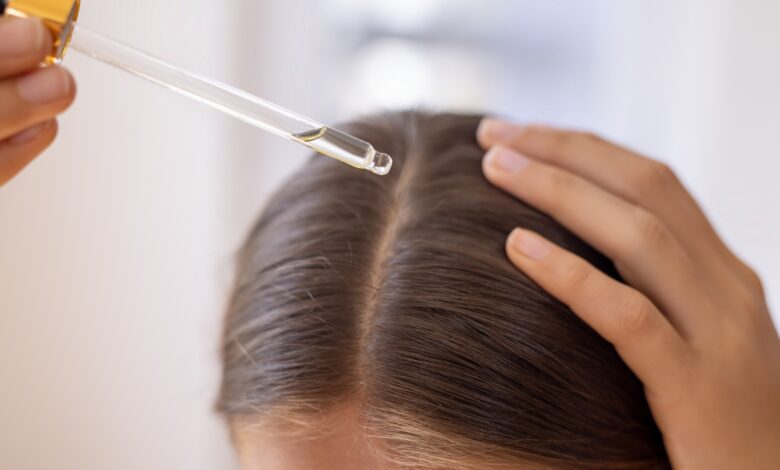12 Best Natural Oils for Hair Growth, According to Dermatologists 2024

How to use: You have the option to add this oil to wet or dry hair, thought adding it to dry hair will improve its manageability, shine, and softness. This is probably the better option for those with very thick or brittle hair. Simply pour a nickel-sized amount into your hands and distribute throughout your hair, focusing more on the middle to the ends of the hair. Avoid adding too much to the root so your mane won’t look greasy.
What reviewers say: “It keeps my scalp free of dandruff, and I rarely have problems with split ends, but it’s a great leave-in conditioner, as well, and takes [away] fly-aways without weighing down my hair.”—Sephora customer review
What is the difference between carrier and essential hair oils?
There are two different types of natural oils—carrier oils and essential oils. Carrier oils are extracted from the fatty parts of plants, like seeds and nuts (think olives for olive oil or coconuts for coconut oil). They tend to be thicker, odorless, and are especially helpful with hydrating the scalp.
On the other hand, essential oils are extracted from flowers, leaves, and stems (like rosemary and castor oil). They are highly fragrant and require dilution with carrier oils before topical application. When massaged onto the scalp, these oils increase blood flow and stimulate the hair follicles, which can help hair grow. Plus, they have antifungal and antimicrobial properties which can help prevent dandruff and are rich in fatty acids to promote growth.
Why are natural oils used for hair growth?
“The best hair oils offer a holistic approach for faster hair regrowth without any side effects,” says Leah Kay, lead stylist at Hair Lounge NYC. In addition to helping alleviate a number of scalp conditions, “oils penetrate the hair shaft to help lock in hydration to leave them softer and more resilient.” They can also be used as a leave-in conditioner to make hair more manageable and easier to detangle. All these factors create an environment that fosters growth and strengthens hair to retain length over time. William Gaunitz, MD, a trichologist and founder of Advanced Trichology Products says essential oils can be helpful with preventing seborrheic dermatitis (a scalp rash condition), psoriasis, dandruff, itchy scalps, and hair loss.”
How do natural oils improve hair and scalp health?
When applied to the scalp, certain natural oils can calm irritation, fight off unwanted bacteria that cause scalp issues, deliver important fatty nutrients directly to the hair root, and stimulate blood flow, says Dr. Gaunitz. These healing properties can treat several dermatological conditions that can hinder hair growth such as psoriasis, seborrheic dermatitis, dandruff, cicatricial alopecia, and overall hair loss, he says. Essential oils, including tea tree, lavender, and clove oils, can also zap fungi, which eliminates excess sebum and oily hair. When it comes to your strands, “Almost all natural oils will provide a degree of protection to the hair shaft (the part of the hair that sticks out of the surface of the skin), thereby protecting it from breakage caused by heat, color, and pollution,” says Elizabeth Geddes-Bruce, MD, a board certified dermatologist at Westlake Dermatology in Austin, Texas.
What is the best way to apply natural oils for hair growth?
When integrating oils into your haircare routine, Kay suggests starting slow to see the effect on your hair health. “Start by massaging a few drops of diluted scalp-stimulating oils (like castor or rosemary essential oil) on your head 1-2 times weekly. Try leaving them on close to an hour before washing it out,” she instructs. “Observe the effect on your hair. If it leaves it too greasy, apply a smaller amount and less frequently or try a lighter oil.” For more damaged or thicker hair, add a few drops of heavier carrier oils (like coconut or avocado) to your shampoo and conditioner for an additional boost of moisture. If you have coarse or curly texture, rub a few drops of carriers (like jojoba or grapeseed) toward the bottom as a leave-in conditioner to heal split-ends.



